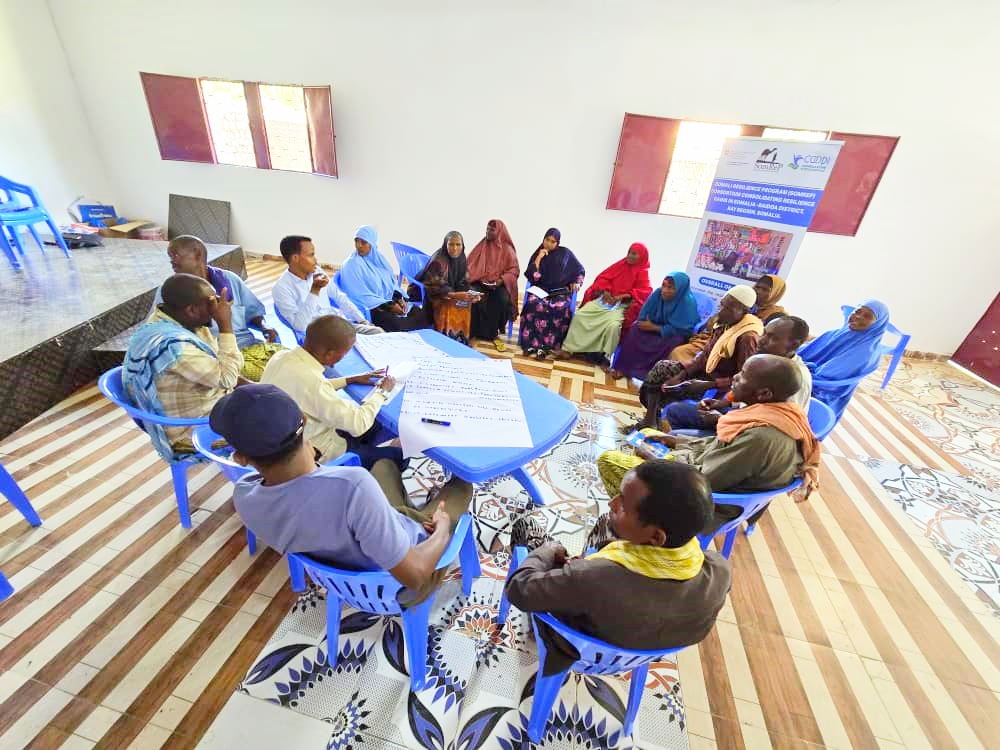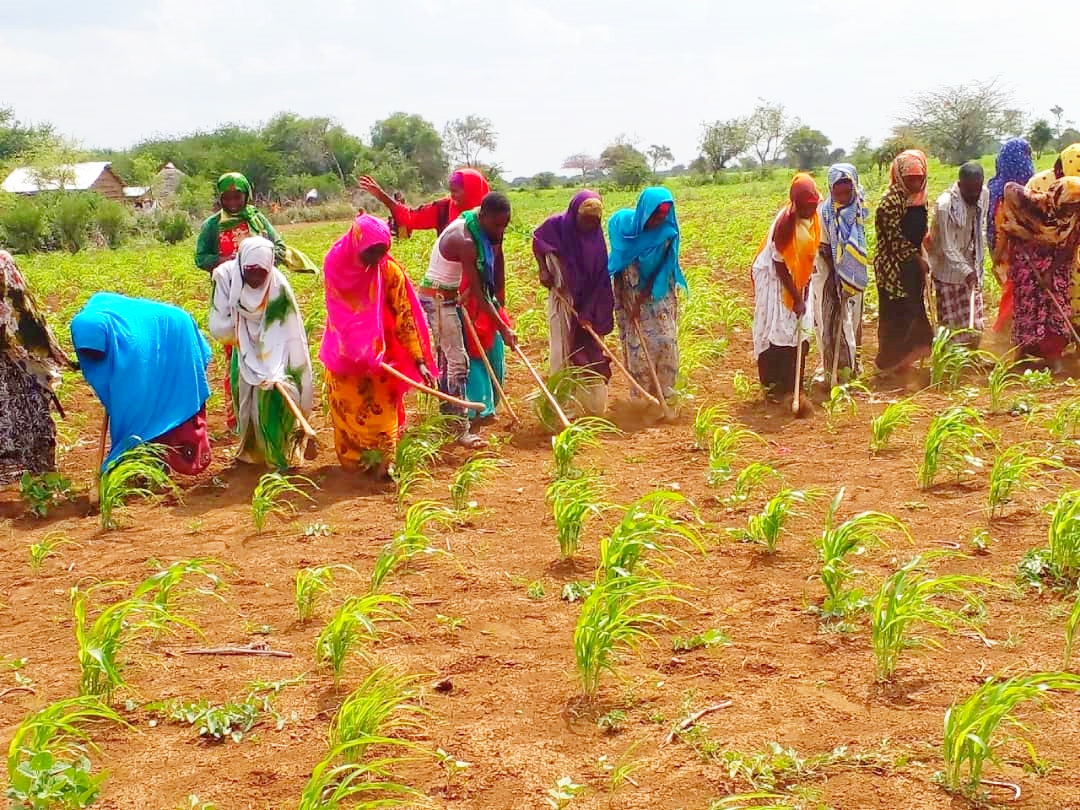16-10-2025 | di COOPI
United for resilience: Community Action and Adaptation Plans transform Baidoa villages in Somalia
In the heart of Baidoa, Somalia, where droughts, erratic rainfall, and land degradation continuously threaten livelihoods, COOPI – Cooperazione Internazionale has been working with rural and pre-urban villages to strengthen resilience, with the project "Water to Resilience Gains in Somalia 2 Year Program" in collaboration with SomReP and funded by Swiss Agency for Development and Cooperation (SDC). Against a backdrop of climate uncertainty and fragile community systems, 11 villages came together to participate in a Community Action and Adaptation Plan (CAAP) training.
For years, communities in Baidoa faced increasing climate shocks without adequate tools or plans to respond. Capacity gaps, weak coordination, the lack of contingency plans and limited opportunities for communities to voice their own priorities created further vulnerability, especially among women, youth, and marginalized groups.
“Whenever drought or floods came, we only reacted after the damage was already done. We had no plan.” said the resident Halima Ahmed.
The creation of a community based initiative
Members of the Village Development Committees (VDC) recognizes these challenges and COOPI decided to launch a community-based adaptation initiative aimed at equipping local committees with the knowledge and skills to prepare for climate risks. The CAAP training in Baidoa marked a turning point bringing together diverse community representatives to design tailored solutions. COOPI facilitated a comprehensive training on climate risk assessment, contingency planning, and adaptation strategies. Over 60 participants attended, representing: Village Development Committees, Natural Resource Management (NRM) Committees, and CAAP Committees dedicated to drafting local adaptation plans.

Through practical sessions, participants developed action plans focusing on water harvesting and conservation, soil rehabilitation and agroforestry, establishment of early warning systems, and community environmental awareness campaigns. As a result, the committees agreed on several concrete actions to implement moving forward. Moreover, Village Savings and Loans Associations (VSLAs) and community solidarity funds are being mobilized to finance small-scale adaptation activities.
For example, the committees committed to construct and maintain communal water storage ponds in two pilot villages to ensure water availability during the dry season. They also plan to introduce household-level rainwater harvesting techniques (such as roof catchment systems) and to organize awareness sessions on water-saving practices. Moreover, the committees will establish community-led tree nurseries and plant at least 1,500 drought-resistant trees in the upcoming planting season. This initiative will be complemented by the construction of soil bunds and the adoption of contour farming practices to reduce erosion and enhance soil fertility.

Osman Macalin Abdullahi, a NRM Committee Member from the Awdinle Village, told that
“Before this training, we didn’t understand how climate change was affecting us or how we could respond. Now, we have clear steps and plans to protect our land and resources.”
The growth of collaboration among villages
The training sparked a culture of collaboration, as committees began coordinating on climate challenges, and villages increased confidence in combining indigenous knowledge with modern forecasting tools to guide action. The Early Warning System (EWS) committees continued to rely on traditional methods such as observing natural indicators (animal behavior, tree flowering, wind direction, and water levels) and drawing on elders’ councils to interpret seasonal patterns, while also adopting innovative tools introduced by COOPI, including community disaster preparedness plans with hazard maps and mobile-based alerts, such as WhatsApp groups, to quickly disseminate drought or flood warnings.
Fatuma Ali, from the Women's Group Representative, explained:
“Now, when the radio warns of rains or drought, we don’t just listen. We meet, we plan, and we act.”
The immediate impact has been the development of localized CAAPs that address the real needs of 11 villages. Beyond written plans, participants gained confidence, practical skills, and a renewed sense of leadership, equipping the community with strategies for water and resource management as well as the capacity to act quickly in the face of climate risks. For example, in one village the CAAP identified water scarcity as a priority, leading the committee to mobilize local labour and rehabilitate a shallow well to ensure reliable access to safe water during the dry season, while in another village the CAAP emphasized soil degradation, prompting the committee to organize community workdays to establish soil bunds and plant drought-resistant trees, thereby reducing erosion and improving farmland productivity. The CAAP initiative demonstrated the power of community-driven climate adaptation. These contingency plans are now integral to the villages’ early warning systems, ensuring they are not only prepared for the next disaster but also united in their long-term journey toward sustainable resilience.
“CAAPs are our map for survival and growth. We are no longer waiting for help, we are leading our own resilience,” said a Village Development Committee member, reflecting the community’s drive toward self-sustainability through CAAPs.
COOPI has been active in Somalia since 1981, dedicating over 40 years to improve health, food security, livelihoods, and access to water and hygiene. COOPI has increasingly responded to the country’s growing challenges, including natural disasters and complex crises exacerbated by climate change. In recent years, the organization has led emergency interventions targeting floods and severe droughts, while continuing to integrate development and resilience initiatives in the most affected regions.




 Somalia
Somalia